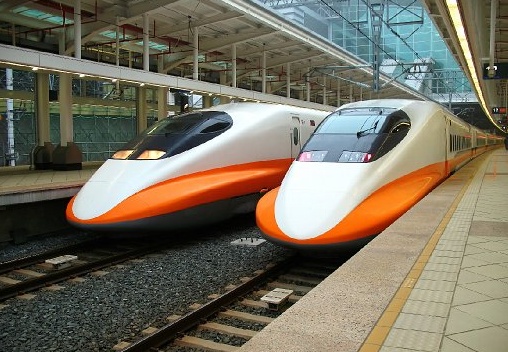Hot Rail: Any section of track over which a train movement is imminent. The closer and/or faster the approaching train, the “hotter” the rail.
About this blog
This blog presents a strategy of building high-speed rail in Australia by upgrading the existing tracks and using non-electrical, tilting trainsets; it is essentially an exploration of how I would build a high-speed railway, if I cared about how much it cost, and wanted to live to see it operational. Incrementalism, rather than a single, transformative megaproject is the way I believe Australia can achieve HSR on short timeframes and reasonable budgets.
Although primarily an exercise in demonstrating the technical viability of incremental HSR, at its heart my blog is about advocacy. I despair at the present state of public discourse on the topic, in which most people seem to fall in to one of two camps: either HSR is amazing, transformative, whiz-bang awesomeness and I don’t care if it costs more than the space shuttle, or alternatively HSR is a total waste of money and its advocates are moonbat-crazy economic illiterates.
I believe there is a middle ground – major speed upgrades at reasonable cost, not with the objective of facilitating inter-capital transport (which is already well served by airlines), but of expanding the 1-hour commute envelope around the major job centres of Australia. This would revitalise regional townships, relieve pressure on housing availability in the major capitals, and ease congestion on all other modes of transport.
About reliability
Hot Rails is a little bit like Wikipedia: it is verifiable, but not reliable. By this I mean that I am not a reliable authority on either the best construction methods and costs for railways, nor railway corridor and alignment selection. This blog is wholly independent, unsolicited, unsponsored and has no links to or support from any government or business entity. Nevertheless, I have based all of my calculations and assumptions on source documents which are reliable. I don’t ask anyone to take my word for it – I always include source documents to back up assertions, so that readers can decide for themselves whether the claims presented are plausible.
Unlike Wikipedia, I do occasionally do my own original research. In these cases I follow an academic method; my working and sources are clearly shown for anybody to check for themselves. If you disagree with any assumptions or calculations I have done, or if you spot an error, I welcome a discussion or correction in the comments section of the relevant post, or a private message.
About me
My name is Edwin Michell; I’m an aerospace engineer, economist and farmer based outside Canberra, close to the Bombala Line to Canberra as well as the long-defunct Captains Flat railway.
I first became interested in the possibility of building high-speed rail in Australia following a holiday to Taiwan in 2009, where I was impressed by their new Shinkansen-based HSR link. A few years later, high speed rail was back on the public agenda, and it looked for a while like there might even be some action. However, when I actually read the 2013 High Speed Rail report from cover to cover, I concluded that not only were the cost assumptions well on the high side, but that the authors’ design choices had ensured maximal expense, for a result that was not commensurately superior to far cheaper options. I began to look into what other high speed railways had cost in the past, and then into what the individual components of railway projects should cost. This blog is the result of that research.
I welcome comments, criticism and feedback of any kind – if you would like to get in contact with me, hit me up using the comment form below.






Re: Proposed sale of Mt Barker Junction Railway Station. The current state government is considering selling the freehold to the above station building, platform and land adjacent the Mt Barker Junction rail line. How would this impact on the future use of this corridor for a fast rail service between Mt Barker and Adelaide. It seems a little short sighted for a small capital gain to me.
I was not aware of that – do you have a link to a news article? I wouldn’t think it would affect the future use of the rail corridor. Mt Barker Jctn is several kilometres outside Littlehampton and wouldn’t reasonably be a stop on any future network, and I doubt they would be selling the rail corridor itself – I belive it’s leased to Steamranger between Mt Barker Jctn and Victor Harbor, and the mainline is of course still in use by ARTC. Presumably someone has offered to buy it in order to turn it into a private house? I’m actually somewhat in favour of that, because at least that keeps the buildings maintained. Mt Lofty Railway Station is one such example. Better than them falling slowly into ruin.
Sure needs a bit of love: http://www.awesomeadelaide.com/abandoned-train-graveyards-stations-railway-tunnels/urban-exploring-mt-barker-junction-station/